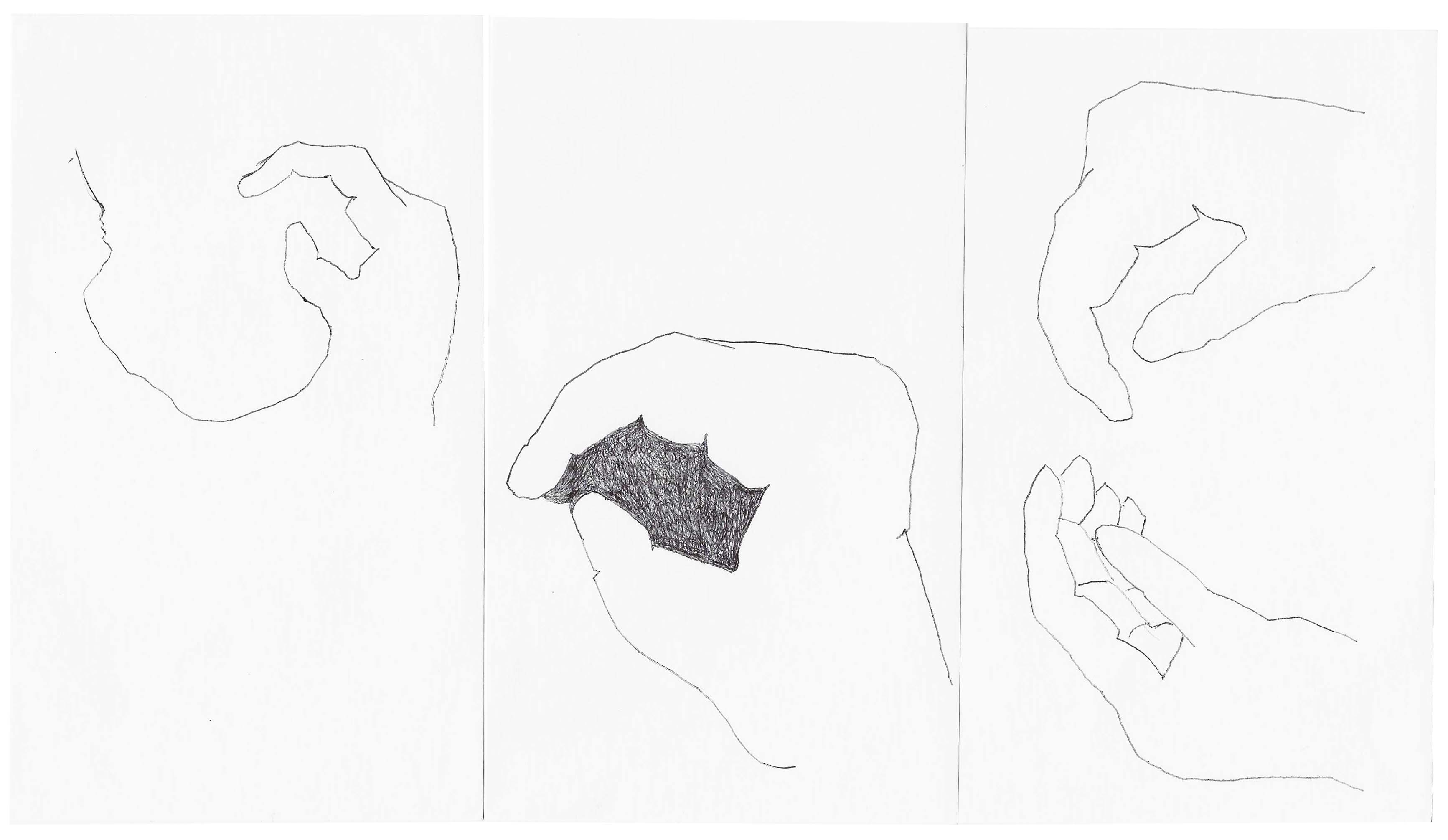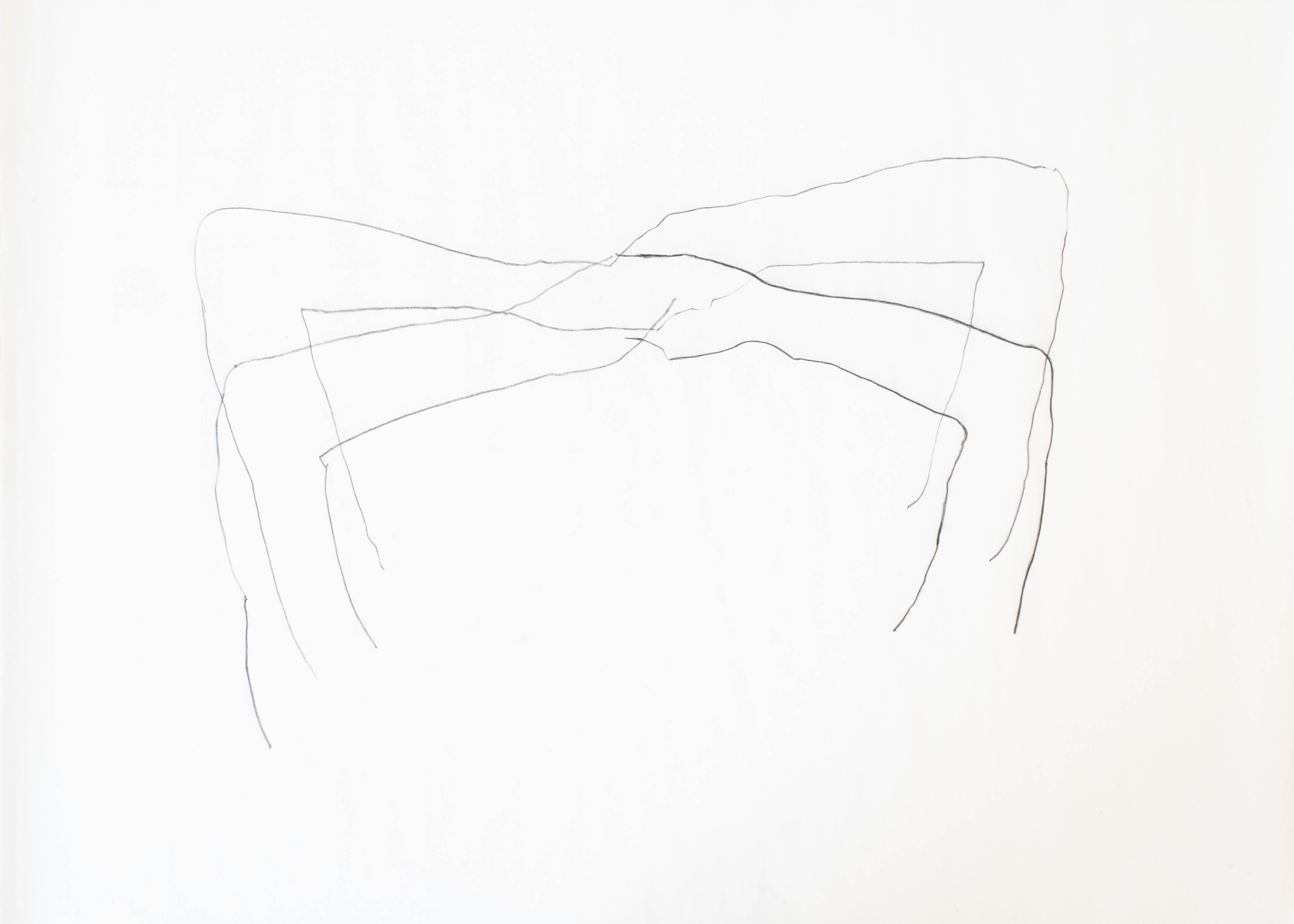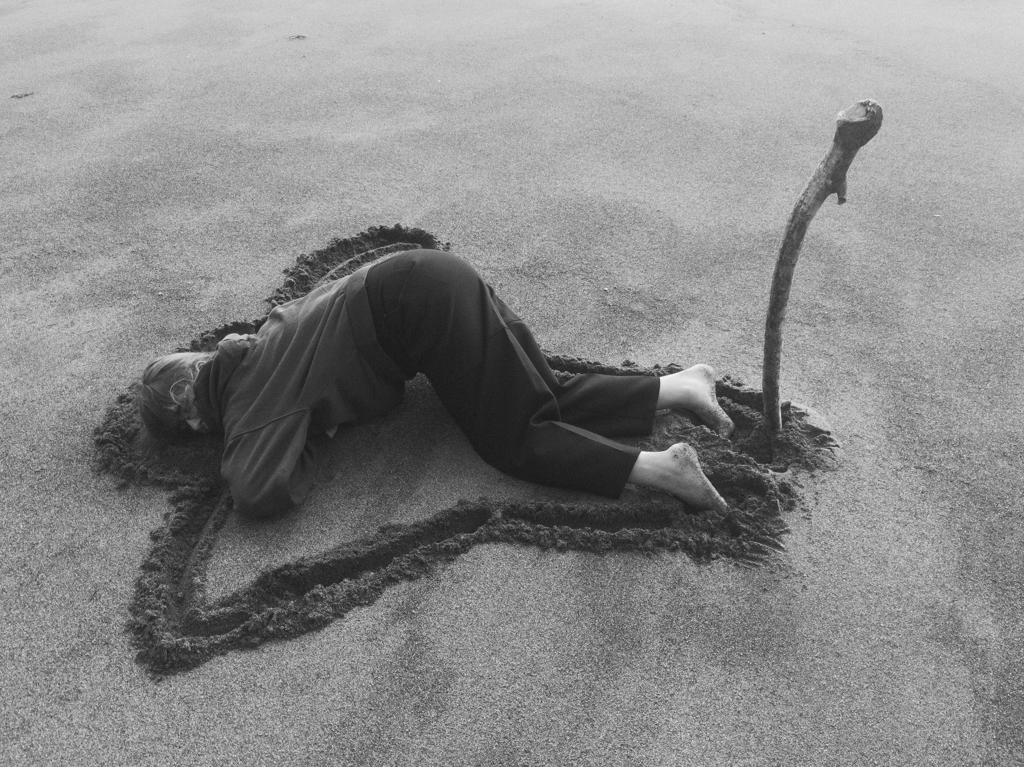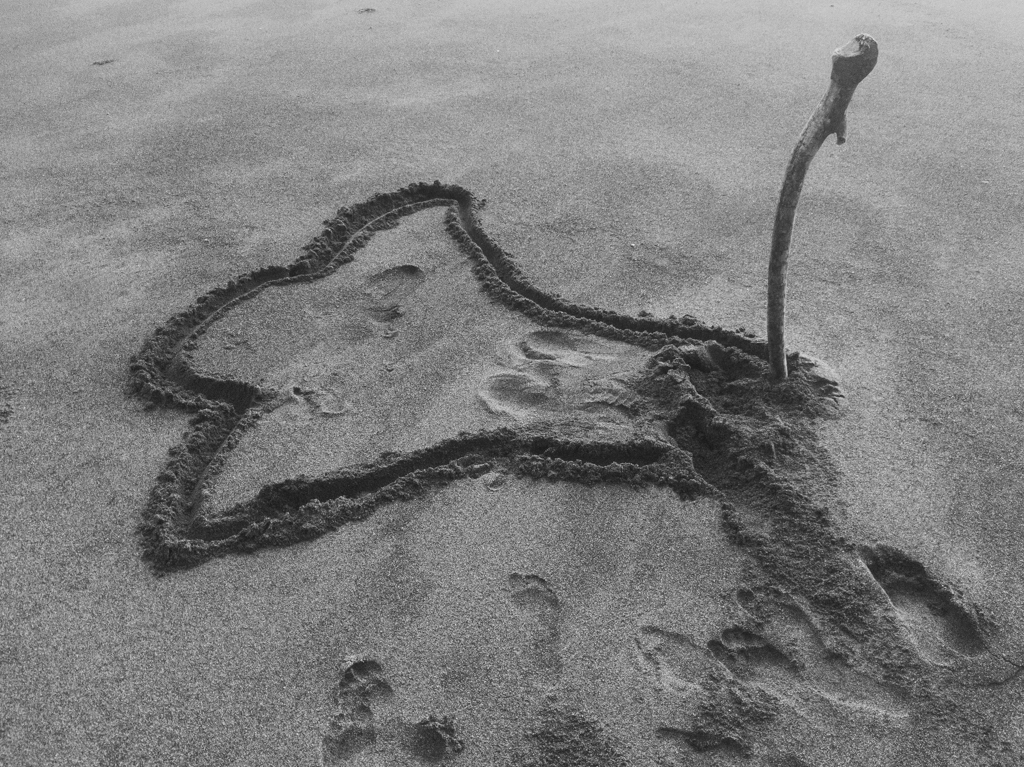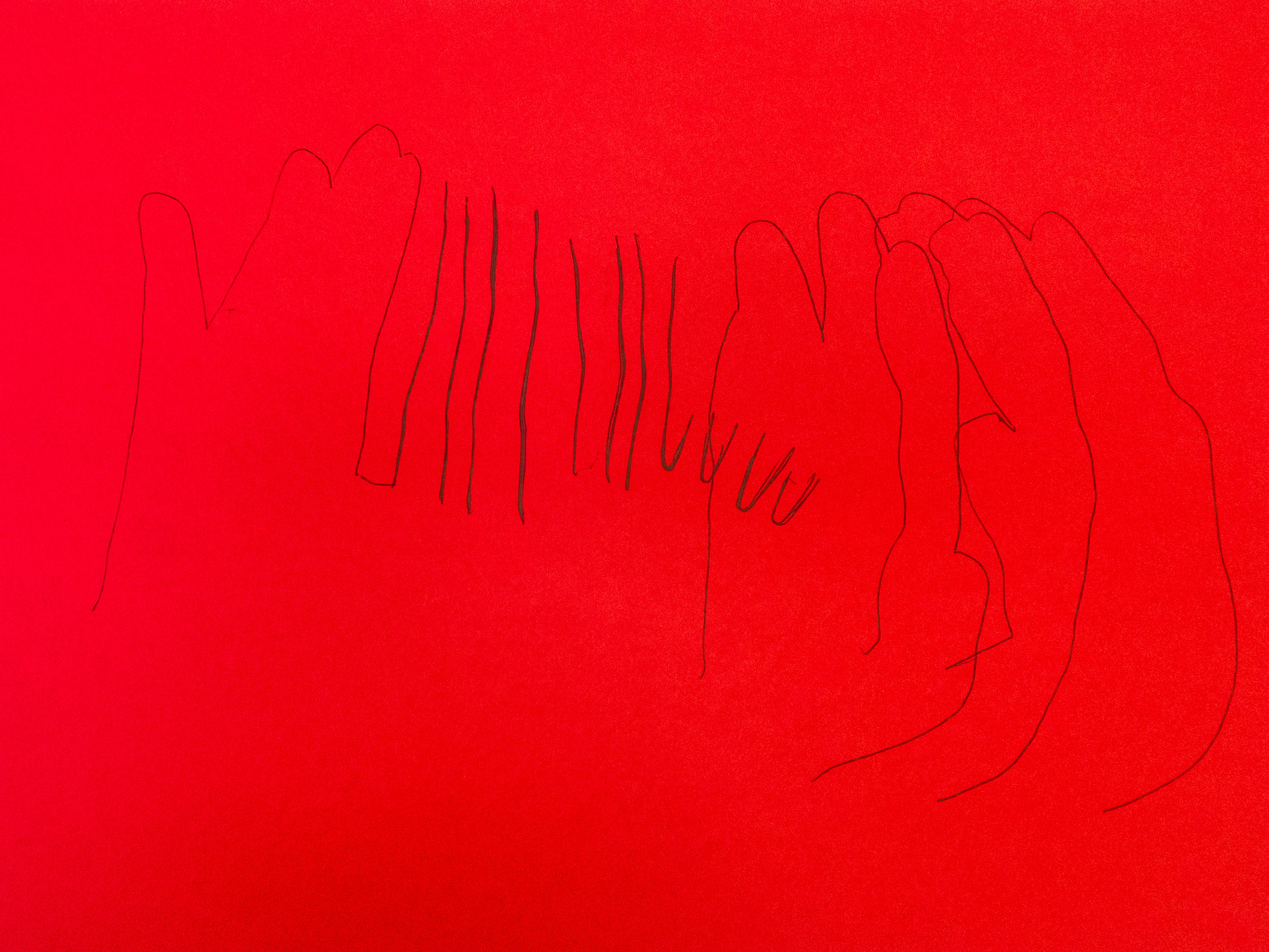As I drink from a mug, I touch it once when to hold it, touch it twice with my lips. But only when I drink from it there is a sensible interaction. Although it is not the mug that goes inside of me, it is what informs the sensation to be. Between the drink and my body there is the mug. I put weight on this act due to feeling the cold drink telling the shape of my own oesophagus, and then of whatever follows. This happens because of the interaction between the drink and my body. And gain a sense of my internal composition, as a drawing, through its felt outlining. The (out/in)line is felt through contrast.
My body is warm and the drink is cold. Putting yourself in contrast with another is a way of delineating yourself, noticing the differences, similarities between the two. Swimming in cold water makes the body feel itself as it is.
To self-ingrain is to touch yourself from the inside,
as if you were the beddings you sleep in.
The act of ingraining is one of entrenchment. To enter oneself - self-embodiment is to feel the body from the inside – to be able to feel your body as the hand feels a glove. This is not a desire to, however, be wrapped in latex. It is a call to be conscious to touch, to (inter)act. It is through ingraining your body that you ingrain the world.
I propose, as Merleau-Ponty does, to see this contrasting outline as an interacting field. A no-mans-land, shared by yourself and the world. Imagine it as a line put under a microscope. As you walk closer to the horizon you notice the ocean is no longer a horizontal line but
a plane of itself.
“The spreading out, especially in the case of a short, straight line, bears a relation to the growing point. Here, too, the question "When does the line as such die out, and at what moment is a plane born?", remains without a definite answer. How shall the question "Where does the river stop and the sea begin?", be answered?” Kandinsky, Wassily. Point and Line to Plane, Cranbrook Press, 1947. 90
The line is only known when entered as a space with its own delineation.

